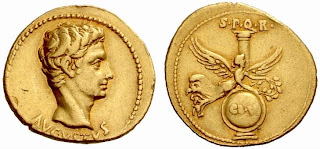A Roman Fort on the Edge of Their World
Fendoch The Forgotten
I accumulated
amongst my post card collection of Crieff and Strathearn a late
Victorian or early Edwardian picture of
a horse drawn charabanc ( bus ) drawn up
at a place called Fendoch at the entrance
to the Sma Glen and entitled “
Roman Camp , entrance to the Sma Glen
near Methven “ Apart from the fact that it was somewhat closer to Crieff
than Methven , it depicted a scene all but
forgotten locally . In the days prior
to the automobile , it was a popular
excursion for the better off
citizens of the town to enjoy a Sunday afternoon trip up by horse
drawn coach into the mysterious hinterland that lay northwards of the Strath .
Indeed until comparatively recently there was an aging sign painted on the gable end of a house on East High Street stating “ McArthur’s
Charabancs trips to the Sma Glen ” The
destination was the Amulree Hotel on the road to Dunkeld and Aberfeldy . An old
coaching inn it was allegedly the base for General Wade who with the assistance of more than a few Highlanders constructed a network of military highways to facilitate movement of
the Hanoverian redcoats in their
task of “ pacifying “ the Highlands
in the aftermath of 1714 Rising .
the “ Roman Camp “ located at
Fendoch was a point of interest en route
to their ultimate destination .
Why did the Romans
construct not just a fort but a
camp in such an isolated spot ? We
have covered in previous blogs the fascinating tale of the Gask Ridge , the
oldest Roman frontier in the World .
Thanks to the detailed and well documented investigations by Professors David Woolliscroft and Birgitta
Hoffman we are able to piece together a
fascinating account of this turbulent period in our history . Their publication “ Rome
Fendoch was first excavated in 1936 and 1939 by Richmond
It is clear however
that Fendoch did follow a similar
pattern of layout to the
“ standard “ type fort
constructed by the Romans in the Gask Ridge vicinity in the 1st
Century AD . What type of buildings were constructed within it’s ramparts? According
to Woolliscroft it would in probability have had an administrative block ,
store rooms and offices and in all
probability a shrine to the gods . The commanding officer would have had a
separate dwelling from the barracks whilst there would have been a granary . In the case of
Fendoch , ovens were discovered built into the external rampart . There may have been a
workshop and hospital accommodation . Probable
strength was between 500 and 1
000 men . It had been assumed prior to the second
investigation that Fendoch
existed as a single phase occupancy
being abandoned systematically when the Romans withdrew. A pollen analysis has suggested that there would
have a lack of suitable trees to use in the construction of the fort
and that these would have to have been
brought from further a field . These
gives credence to the belief that
these timbers would
have been dismantled and removed
rather than merely burned on the abandonment .
Recent findings of pottery and other artefacts suggest that the occupancy was perhaps
earlier than had been initially thought . Findings were Samian ( 69 -79 ) and
late Neronian ( 54 – 68 ) .
It has been the
belief since the initial excavations in
those far off pre war days that to the
west of the fort , the Romans had constructed a watch tower of the type found on the Gask Ridge . Woolliscroft
has raised some doubts concerning this
and no doubt future excavations will
throw light on its authenticity .
Recent excavations
carried out on account of the Beauly to Denny power
line have revealed an iron age ( 1000 BC ) settlement and roundhouses similar to those found at Pittentian near Crieff .
Fendoch is intriguing and an oft forgotten part of our local Roman heritage . One trusts
that it will soon recover some of
its past glory !

.jpg)
.jpg)
.JPG)




.jpg)
Strangely enough neither postcard nor the modern photograph actually show the Roman Fort at Fendoch. All three pictures show what is a natural terrace on the left side of the B 8063 just after the bifurcation with the A822. The Roman Fort of Fendoch lies 750 metres to the right of of the B8063 at this point.
ReplyDeleteThe postcards show a view looking over to where the modern Dallick House lies. The nearest Google Street view is here.
http://goo.gl/maps/eAudB
This OS extract shows how the Victorians with a Roman Fort to their right and a probable Roman Signal Tower to their left managed to miss both.
http://binged.it/Hckm3O
Sometimes reality is even better than pictures!